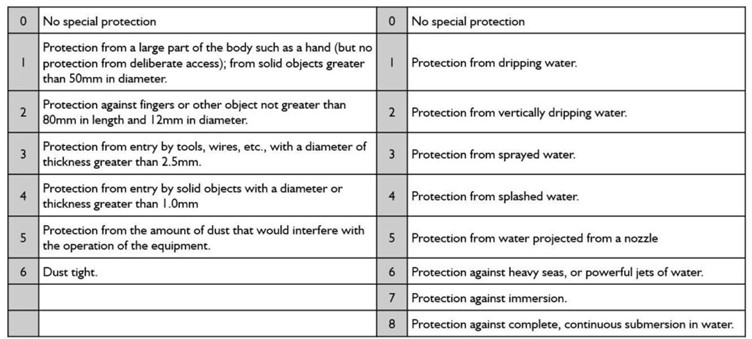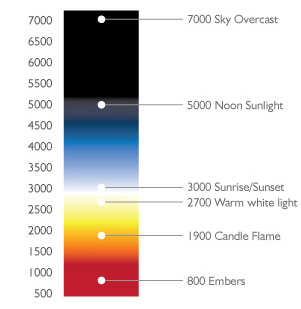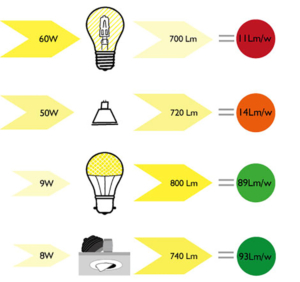-
All controls systems offered come with their own SMART phone/tablet standalone applications which allow for more flexibility in controlling the systems.
Our controls team will go through how they operate in person and cover all the features that they offer.
-
Yes we sell lighting controls in house and they are supported by our specialist controls and technical team. We offer controls for various scenarios in the home from Single room solutions to whole home systems.
Working alongside respected brands Lutron, Helvar, Rako and Forbes & Lomax we have a solution that will suit your requirements. For any enquiries please contact the customer service centre on 020 7371 9000 or email [email protected]
-
Current rated LED’s require a constant current such as 350mA or 700mA, these LED products will also require a forward voltage that is specific for the particular LED being used in the product. A current rated LED needs to be specified with these two factors taken into consideration i.e. 4 x LED’s rated at 700mA with a voltage of 3.2vDC each will require a driver that produces 700mA with a minimum voltage of 12.8v. Current LED’s also need to be wired in SERIES.
Voltage rated LED’s require a constant voltage such as 24vDC, these LED products will also consume a power (wattage) that is specific for the particular LED product being used. A voltage rated LED can be specified much the same as regular low voltage products i.e. having the required voltage (24vDC) and having a wattage output suitable to the amount of wattage consumption. Voltage rated LED’s also need to be wired in PARALLEL.
-
The system is used provide a guide to the degree of protection that a luminaire has against the ingress of solids and liquids.
IP Rating: Value Definitions

The First Number relates to solids and ranges from 0 –6.
The ratings offer a logical progression from larger to smaller objects, so the lowest number (zero) indicates that there is no protection against touching live parts within the equipment. The most common rating for a light fitting intended for general interior use is IP20, which tells you that nothing larger than 12.5mm diameter can reach a live part when the equipment is fully assembled.The Second Number relates to liquids and ranges from 0 –9.
Unlike the natural progression assigned to the ingress of solids, the second number relates to styles of liquid ingress; drips, sprays, splashes, jets and immersion. -
Colour rendition is the ability of a light source to accurately illuminate a colour compared to a reference source.
How is this measured?
The current method uses a reference pallet of 8 colours (R1-R8) called the Colour Rendering Index (CRI) developed by the CIE. Latterly an additional 6 (R9-R14) more saturated colours have been added but do not have to be referenced. CRI is stated in terms of a factor of 100 e.g. CRI80 or CRI 90 and is an average of colours tested (Ra).What is the future of Colour Rendition?
The Lighting Industry has taken steps to move away from the CRI method as it is too limited and not a true representation of colour, especially with White LEDs.What is TM-30?
The new TM-30 standard offers two metrics Colour Fidelity (Rf) and Colour Gamut (Rg). Colour fidelity is similar to CRI however references 100 swatches rather than 8.Colour Gamut is the average level of saturation relative to a reference illuminate (measured between 60 and 140).

-
Correlated Colour Temperature (CCT) is reference to the colour of light emitted by a reference solid object (Black Body) as it gets hotter from red through to white. It is expressed in degrees Kelvin. The sequence of colours describes a curve within a colour space. This is shown in the diagram on the right.
What do John Cullen Lighting Offer?
The standard JCL colour offering is 2400K, 2500K (Linear LEDs only), 2700K and 3000K.Why do we offer 2700K?
Traditionally residential properties were lit with incandescent lamps which emit light with a colour of roughly 2700K.
-
Colour consistency in an index related to the light sources range of variation in chromaticity (colour) that can be picked up by the human eye.
Why is this an issue for LED?
During the manufacture of LED the colour, luminous flux and forward voltage can all vary. An LED is essentially grown and although accuracy of this has improved over time consistency is still an issue.How is colour difference measured?
Colour difference is defined by a steps of MacAdamellipse. The scale is set by ANSI Chromaticity Standard. In short though the smaller the ellipse value (size) the smaller the colour difference. -
As there is no method today that offers 100% replication of a set specification, so the LED manufacturer measures each LED chip and separates them in separate groups (or bins) which are defined by each manufactures own coding system. In the diagram to the right 8Cis an example bin. At John Cullen Lighting we specify LED chips with the smallest bin possible to allow for consistency among the range.
-
Lumens measure how much light you are getting from a bulb. More lumens means it’s a brighter light; fewer lumens means it’s a dimmer light.
Lumens let you buy the amount of light you want. So when buying your new bulbs, think lumens, not watts.
-
A common misconception is that LEDs do not generate heat. Although the beam emitted is cool they do, like any other light source, convert electric power in radiant heat. Lifetime of the LED Chip is directly linked to the operating temperature of the LED Chip (often expressed as Tjor Junction Temperature). Poor thermal management where the LED is operating above manufacture guidelines can also lead to colour shift.
How does John Cullen manage the operating temperature?
There are various methods of doing this, at John Cullen we use the body of the luminaire to draw heat away from the LED chip. We do this by carful material selection, considered produce development and by working alongside our subcontract partners who are able to virtually assess designs and physically test prototypes.How does this benefit you (our clients)?
By fully testing our luminaries we are able to offer our clients information such as maximum ambient temperature the luminaire can operate in, so our clients can be assured of life time and colour consistency of their investment in our lighting. -
Yes, we run a John Cullen Lighting approved contractor scheme in which contractors attend our customer service centre in Bagley’s Lane London to carry out product training and installation guidelines along with Q&A sessions.
Successful contractors are then added to our list of approved contractors that we recommend to clients. For more information contact our customer service centre on 020 7371 9000.
-
Yes, we can provide a Site Support Request Form to clients which requires filling out before attendance.
The call out rates are defined in this document and the visit lead times vary from within the same week to two weeks advanced notice depending on current workloads.
-
Governed by the driver manufacturers’ guidelines, we suggest up to 10 meters max. Should your drivers require placement further than this, your electrical contractor will need to work out the potential voltage drop that may occur on the type and size of cable installed to ensure that it matches the parameters of the driver such as forward voltages and wattage.
In some instances, it is possible for the cable installed to be of a larger diameter to allow for a greater voltage drop within the driver parameters.
-
All controls systems can be integrated into 3rd party controls systems (Crestron, Control 4 etc.).
Our controls team will provide your systems integrator with the necessary information they require to make this happen.
-
All mains voltage and dimming control connections are to be installed by an approved electrical contractor with our controls team carrying out the setup of the system. We work closely in hand with contractors providing all necessary documentation, site visits and support.
We can also arrange in house contractor training with our Demo Panels to ensure clarity all round.
-
Most fittings require insulation to be removed from the drivers and fittings. Please check with the installation sheets for the specific product.
-
Several of our fittings, use a unique concealed ceiling ring for easy lamp changing. These ceiling rings stay permanently in place in your ceiling and there are no long coils of metal to manoeuvre. When the lamp needs changing you just pull gently on the bezel of the fitting and the central lamp holding part of the fitting will move. This also enables you to change lenses very easily without damaging your ceiling. This ring works well with a more delicate lath and plaster ceiling and a description of installation is provided on a Specification Sheet.
-
Our LED products are designed with long lifetime in mind, allowing reliable thermal management. John Cullen Lighting currently offers a standard 5 year warranty on our interior products, a 3 year warranty on our exterior products and a 1 year warranty on all Sale items, from the date of delivery on products purchased from January 2023.
To read our full terms and conditions, click the link here. John Cullen Lighting Ltd Terms and Conditions of Supply.
-
A driver is used to output the necessary constant current or voltage required for our LED product operation. Our constant current drivers operate at 350mA or 700mA depending on the product and require the luminaries to be wired in series. Our constant voltage drivers operate at 24V CV and this is used to operate our Contour LED strip light.
Unlike traditional transformers used with halogen or LED retrofit lamps which convert mains 230V down to 12V, LED drivers allow for multiple dimming platforms such as Phase, 0-10V and DALI dimming which provide a smoother dimming performance with the addition of a ‘DRINT’.
-
A DRINT is used in conjunction with a Constant Voltage Driver to enable smooth dimming via a 1-10V or Dali control.
Controls
Design Services
Hospitality
Working With You
Inspiration
About
Our Showrooms
Search